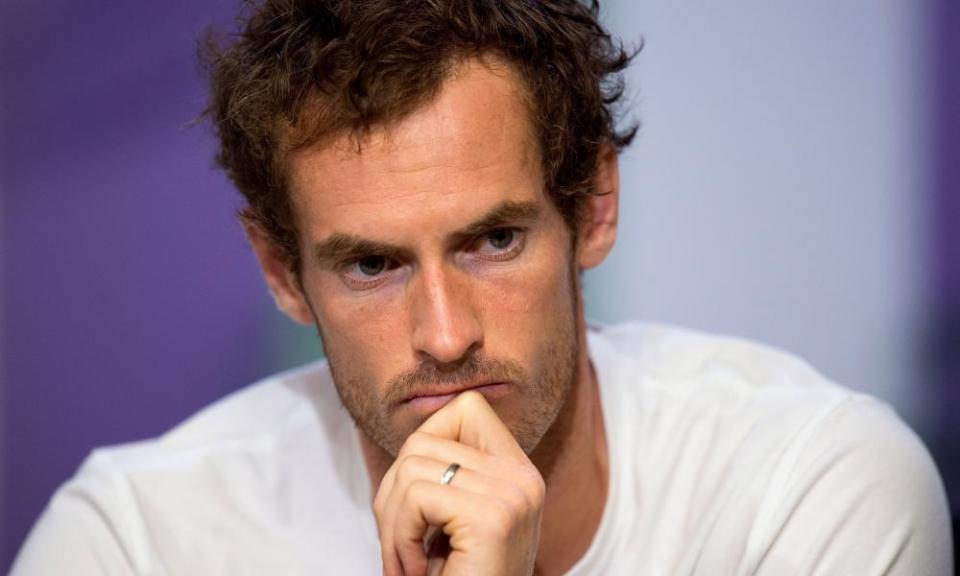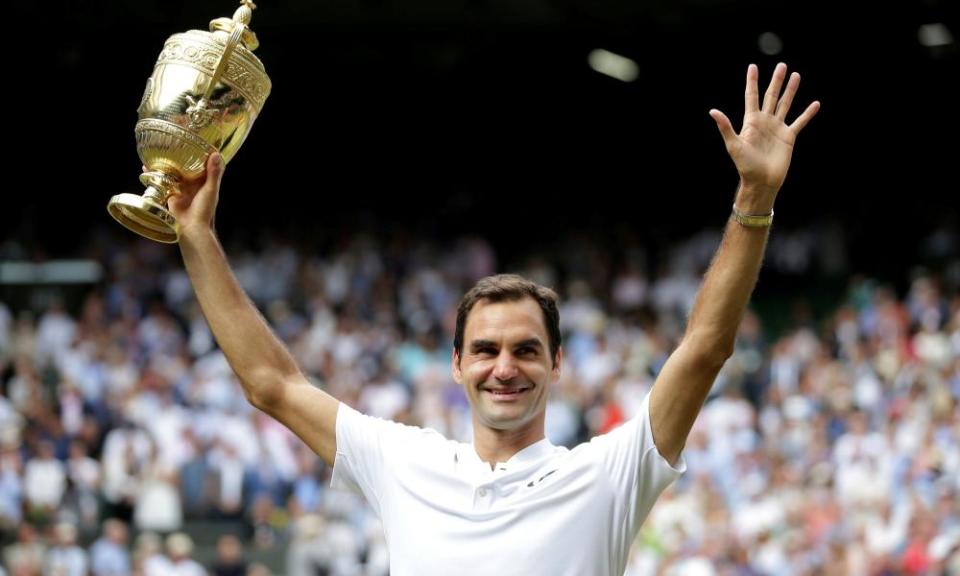Roger Federer turns back time at 36 but Andy Murray faces hard questions

Like Roger Federer’s exquisite backhand down the line, all things must pass – and nobody is more aware of the tyranny of time than the Swiss.
Still resting from the rigours of clay (the odds on his ever trying again for the French Open are paper-thin), Federer is 37 in August and continues to astound with his longevity. Federer returned to world No 1 this week without lifting a racket after Dominic Thiem stopped Rafael Nadal’s record run of 50 sets in a row in Madrid last week – then the Austrian bowed out in Rome on Wednesday with a spectacular racket-smash when losing to Fabio Fognini.
Unless he turns his whole strategy upside down, we will not see Federer on clay again, although nobody would bet against the best-preserved athlete in sport adding to his eight Wimbledon titles, given the paucity of in-form, fit and available grass specialists.
READ MORE: Nadal conqueror Thiem outclasses Anderson to reach Madrid final
READ MORE: Rusty Wawrinka beaten by Johnson in Rome comeback
READ MORE: Nadal unfazed by losing number one status
One observer who has looked closely into the qualities of the seemingly ageless Federer is the American sportswriter Jeff Bercovici, whose new book, Play On: How To Get Better With Age, is an excellent read.
The secret, Bercovici says, is love. “In interview after interview since his 30th birthday, Federer has attributed his longegvity to a deep and abiding love of tennis,” he writes. “To hear him tell it, he … is just a big kid out there. ’I grew up playing against walls and cupboard and garage doors, and I still enjoy it.’”
One presumes he no longer needs to bash the house up but his joy and sense of contentment are still palpable.
And he is keeping an eye not only on his peers in Rome this week, while enjoying the Swiss air of his palatial home. When asked for an observation of the ATP’s second NextGen tournament – which will be back in Milan in November – he smiled and said: “They’ll eventually get better and push us out. Pretty simple.”
If only it were.
Andy Murray is finding his battle with the years more problematic but it is also a love of tennis that keeps him going. However, as he stalls over the exact date of his comeback, could he be considering a most unusual re-entry point: doubles with his brother, Jamie?
They have played together 59 times, so it might be more than idle speculation that the younger sibling of Britain’s most decorated tennis family could extend his faltering career by one day teaming up with doubles specialist Jamie once again.
Murray was adamant after his exhibition match in Glasgow last November against Federer that he would not return to the Tour until he was “100% fit”. And rightly so. However, it has become clear – well opaque, at least – that, despite intensive rehab over the past five months after hip surgery, he still feels unable to make that cast-iron commitment.

Murray, who turned 31 on Tuesday, would seem to have no idea when he will be fit to play again. Rarely has there been such a cloud over his career – not even after his back operation in 2013. The gloomiest scenario is Murray chooses to write off the rest of 2018. If he does, easing back into elite tennis with Jamie next year might prove to be an attractive option. It would require Jamie to suspend his partnership with Bruno Soares, temporarily at least, or after they have played out their commitment. While there are people in tennis who insist Jamie is edgy about playing with his brother, the evidence for that is slim.
In the early days of their career, Jamie and Andy were a regular left-right combination on the circuit, winning 35 times between June 2006 and September 2016, as well as six out of six times in Davis Cup – but, intriguingly, never in a grand slam. They won finals in Valencia in 2010 and Tokyo in 2011, and lost in the Bangkok decider in 2006.
The road back will be tough, whatever route he takes. This week, Murray’s singles ranking fell to 45; the last time he was rated that low was 19 June 2006, after losing to world No 116 Janko Tipsarevic in the first round of Queens. From there, he began his steady climb to No 1 in the world – a journey that took him 10 years.
After the French Open – where he last played in a grand slam – he will drop out of the top 50 and then will be officially unranked. These are all numbers, and they in no way reflect either Murray’s determination or his passion for the game. It is inconceivable we will not seem him on a tennis court again but time and options are shrinking by the day, the week and the month.
As it stands, Murray has his name down for the 250 event on grass in Rosmalen in the Netherlands in June, the week after the French Open. The Roland Garros tournament starts on Sunday. Then there is Queens, followed by Wimbledon but continued inquiries fail to elicit anything more than shuffling feet from his team about whether he really will play in the Netherlands.
Murray’s name has yet to appear on the list of wildcards for Loughborough this week (they close on Friday) or an LTA indoor hardcourt tournament that looked suspiciously as if it were invented for his comeback – as did a 250 event in Glasgow last month. He didn’t play in that one, either.
He has committed, from a distance, to play in Washington DC on 28 July before the Cincinnati Masters on 11 August and the US Open, which starts two weeks later. If he misses the grass season, will he relish coming back on the hardcourts of America? Unlikely. Grass is his home.
None of this is to underplay Jamie’s doubles career. He has won five grand slam titles and he and Soares remain a formidable combination but could family loyalty lead him back to playing with his brother – the way it started over upturned cereal packets across the kitchen table in Dunblane a quarter of a century ago?
